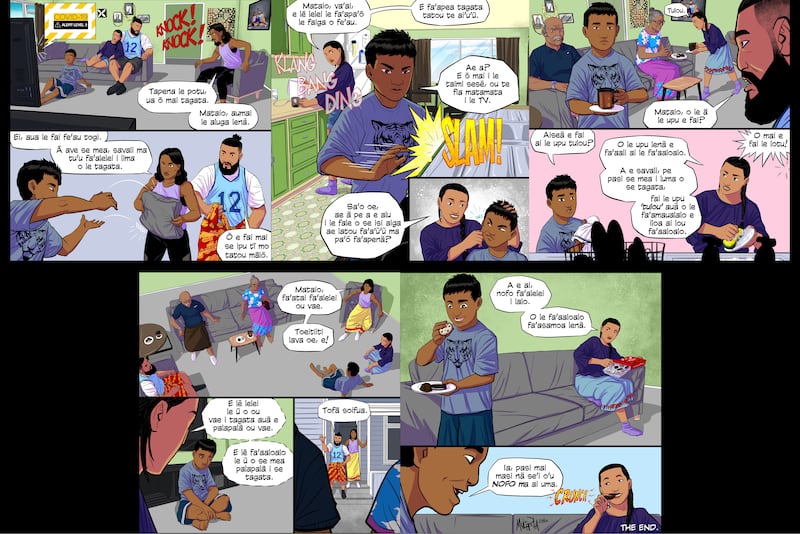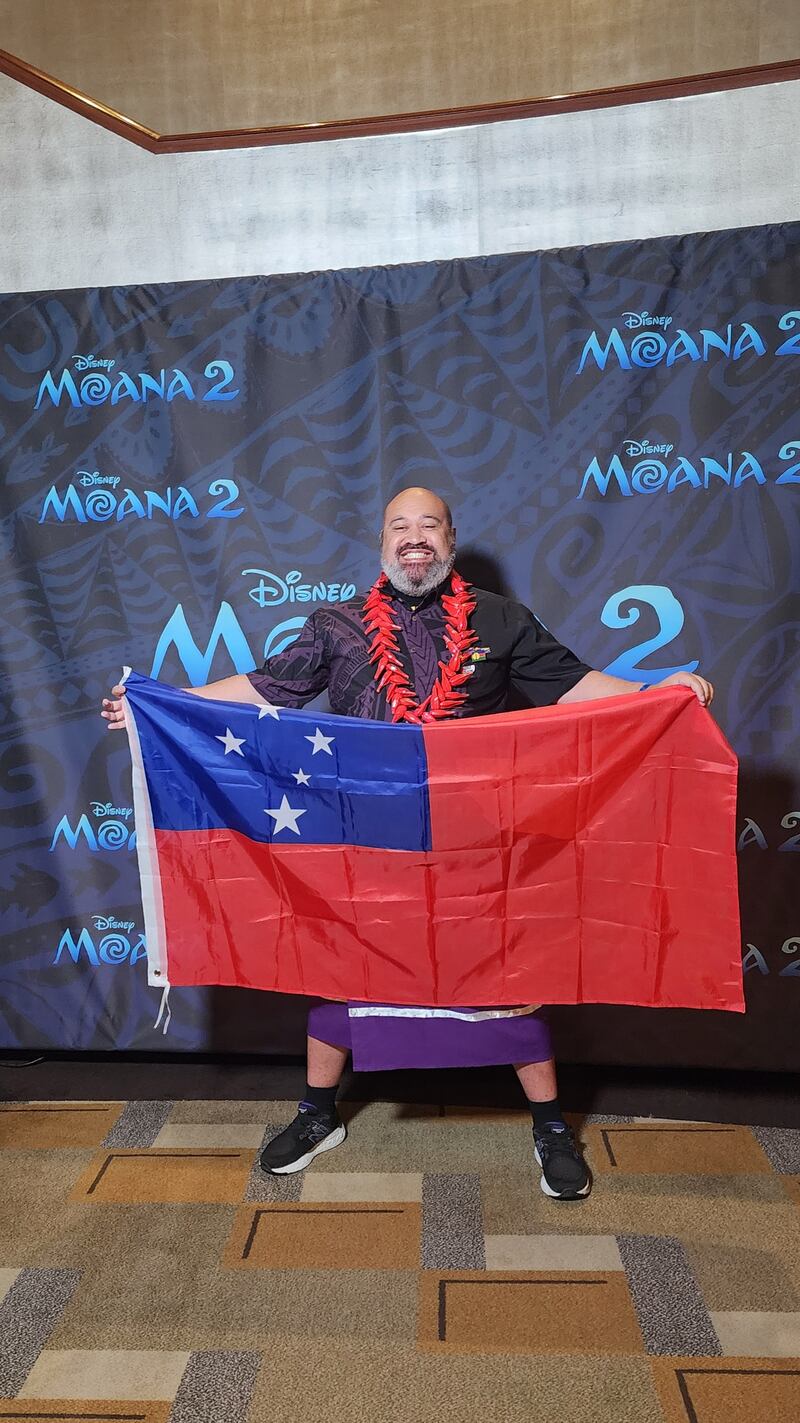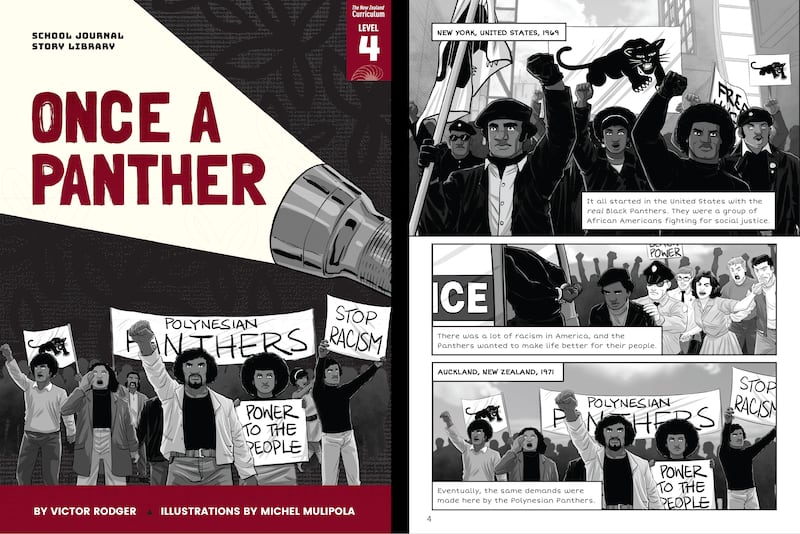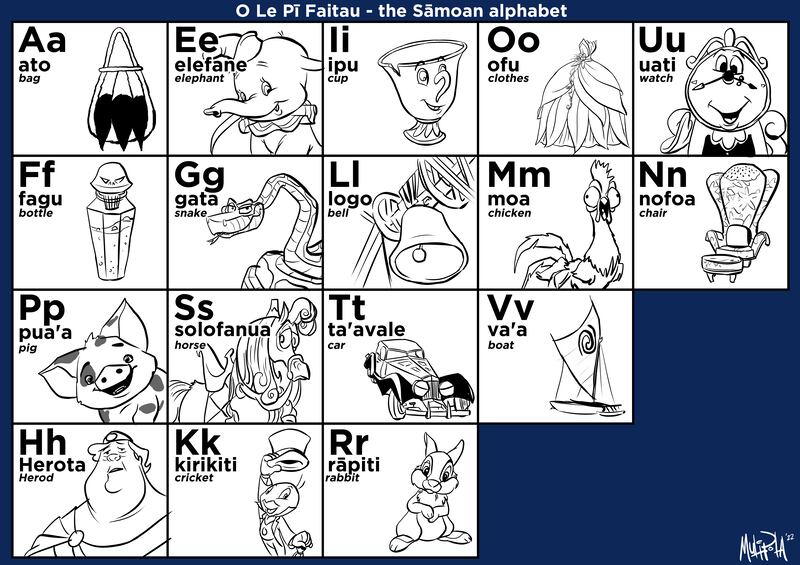Comic and visual artist Michel Mulipola nearly missed out on taking part in being part of Moana 2.
But Mulipola, who hails from the Samoan villages of Lefaga and Vaimoso, ended up helping to shape the film’s story and cultural authenticity.
Moana 2 premieres to the public this Thursday.
“The great thing about it was I got to do it all from home, here in Aotearoa, in Māngere, South Auckland of all places,” Mulipola said.
An unexpected turn of events
Initially, Mulipola applied for the job on what was originally a Moana TV series and was reworked to a film. Disney producers said they liked his work but decided to go with another artist.
Given they liked his work, Mulipola decided to go to the US on his usual trip to San Diego Comicon but let Disney know he was in town.
In Los Angeles he got a text from a friend who worked there, saying Disney wanted to meet him because his name kept coming up and, after meeting kanohi ki te kanohi with Disney officials, he was offered a job to join the team.
Disney gave him a five-week contract, uncertain if he’d like the story artist work as it was new to him but, storyboarding his first scene in the third week the company extended the contract to eight months.

Letting the story take over
The role of the story artist includes storyboarding, pitching ideas and helping develop the story.
“One of the things I loved about working under Disney in that space was I was able to let the story take over, and follow where it leads, and then come back to the team with the ideas,”
He said he had the freedom to “swing for the fences” but not every idea was a home run. Some ideas were included, some removed, orand some fine-tuned to put forth the best work and best ideas.
He said it was “very much like wānanga” in how they worked through the ideas, with the focus being whatever was best for the story.
‘I’m Samoan before I’m an artist’
Mulipola also became a cultural consultant for the film after the story artist contract ended. However, he said while working as a story artist, being Samoan, he was already doing cultural consultancy as the story developed.
Working with other Pasifika, Bryson Chun (kanaka Māoli writer) and Lucyola Langi (Tongan story artist) he said they shaped the story as it was being created and corrected it if things weren’t culturally appropriate.
Asked if it was hōhā having to be a cultural consultant on top of being a story artist, he said it felt like the right thing to do.

“I’m Samoan before I’m an artist,” Mulipola said, “so while I’m in that position, it’s up to me to uphold my culture and my language.”
To protect his people in that space and make sure what was shown on the big screen was at least tika.
Although not able to reveal anything from the film, Mulipola alluded to one thing that he warned Disney about, which he believed could get backlash from tāngata moana communities.
He encouraged people to see the film, to make up their minds on it.
“It’s a beautiful film and each person will take something from it. And it’s natural that some people will like it and others won’t,”
But he said he was interested to hear what people thought of it.
Samoan language class
“There are always challenges, especially working with a big conglomerate like Disney, because a lot of those people in that room only have surface-level knowledge of our cultures and often they think our cultures are monolithic,” he said.

“A lot of it is education and ignorance.”
Mulipola said Disney did the visual representation very well - the motifs, petroglyphs and designs.
He did, however, call for better language representation because people were constantly mispronouncing names, reo, upu.
“Visual representation is awesome but language representation needs to be implemented because our cultures thrive on oral traditions, so language is very important to us culturally,” he said.
So, especially when some of the characters were named after family members, it wasn’t good hearing Americans constantly butchering their names and he proposed to teach them a Samoan language class for the basic sounds, which were fairly universal across the Pacific.
To Disney’s credit, Mulipola said, it agreed and the class went well.

Mulipola wasn’t sure whether his work would make an impact on the overall film but, when the first teaser dropped, he heard one of Moana’s lines and said, “that’s me”.
“That was really crazy to know that someone like myself who had never worked in animation, who was on the other side of the world, could make such an impact on the film in that way.”
Having watched the movie there was a particular name he heard and he exclaimed, “yo, they actually listened to me!”
He said everything came down to the story and that is where he loved to be, to connect with people, which was what stories did and to create understanding was the power of story.
“That’s why I’ve used my skills in other areas outside of animation, helping to tell other people’s stories in activist space,” he said.
He said creating understanding made stronger kotahitanga.



